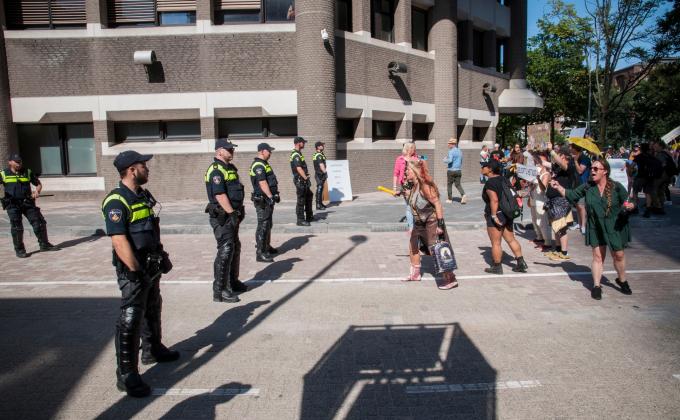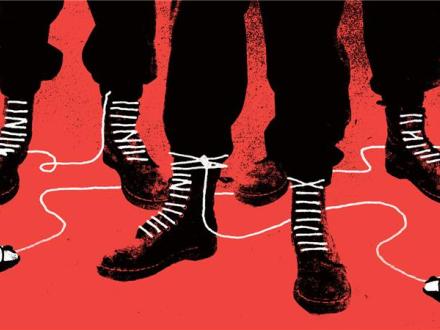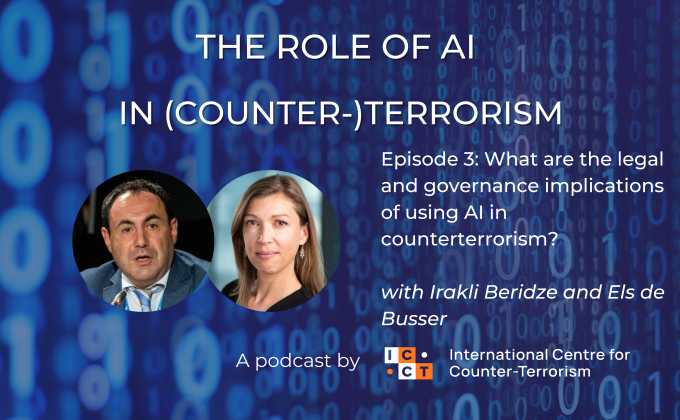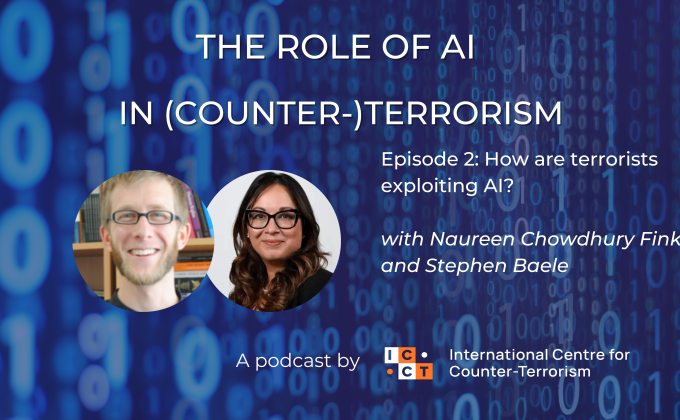He knew his adventure would end badly. “I’m joining the resistance”, he wrote in a farewell letter to his wife. “I don’t care if I live or die. But it will be on my own terms, I will live my last days the way I want to. I know I will suddenly be an enemy of the state. They will come looking for me and eventually they will find me. I’m ready.” The Belgian soldier Jürgen Conings refused to live any longer in a country where, as he saw it, the government together with a group of virologists decides how ordinary people have to live their lives. That is why he set out to kill Mark Van Ranst, a high-profile and outspoken virology professor who advises the Belgian government on their reponse to the Covid-19 outbreak. The authorities took Conings’ death threats so seriously that they decided to move Van Ranst to a secret and secure location. Conings disappeared into the woods, where he was found dead, presumably by suicide, more than a month later. This bizarre affair poignantly shows the lengths one man was willing to go to in his fight against the restrictions that the Belgian government took to stop Covid-19. But is it representative of a broader phenomenon, or should we view it rather as an isolated incident? Has the Covid-19 crisis exposed a reservoir of discontent and distrust in the government that can turn (or has already turned) into Covid-related extremism? With the recent upsurges in Covid-19 cases, it is far from certain that the pandemic is behind us. And what is more, this is probably not the last time governments will have to take measures that have a direct and deep impact on people’s lives. This time people feel threatened by attempts to contain Covid-19, but the next time around the problem may be the outbreak of another infectious disease, or perhaps another refugee crisis. Or maybe the efforts to counter climate change will incur the wrath of people who feel the measures are aimed against them. Thus, as the first countries are beginning to emerge from their lockdowns it would be useful to take stock of a year and a half of protest and resistance.
Potential for violence
In his short book Extremism, J.M. Berger states that “extremism refers to the belief that an in-group’s success or survival can never be separated from the need for hostile action against an out-group”. In this sense of the term, there are certainly elements of extremism among the hardline opponents of the Covid-19 restrictions. In Covid-related extremist narratives, the in-group is ‘the people’ and the out-group is the political and economic elite that is using, or even staging, the pandemic as an excuse to introduce measures to subjugate the people.[1] The consequent rhetoric may look familiar to those who are well-versed in terrorism studies or conflict studies. First of all, there is the idea that there is a war going on. In this reading of events, the Covid-19 restrictions are steps towards the establishment of a dictatorial or totalitarian regime. There are many variations of this conspiracy theory, but a common theme is that Covid-19 is a hoax that is being used to justify extreme measures that will reduce citizens to mere slaves. This means that the stakes are high and that there is an obvious need to fight back. In this zero-sum game, people feel that their lives are in danger, which obviously lowers the threshold for the use of violence. A second recognisable element is the dehumanisation of the perceived enemy, in this case the government, the pharmaceutical industry and whoever else is suspected to be involved in staging the crisis. Probably the most extreme form of dehumanisation is offered by the supporters of the QAnon-conspiracy theory. They believe governments around the world are being controlled by a small, sinister group of Satan-worshipping child rapists who are blackmailing politicians with footage of orgies where the latter drink the blood of young children. But even outside of the QAnon-bubble people have few qualms about comparing their governments to Nazis or suggesting that there should and will be a second Nuremberg Trial for the perpetrators of the Covid-19 hoax. With the enemy being portrayed in this light, we should not be surprised if someone takes it upon himself to take up arms and fight back. What is also disconcerting in this light is the acceptance of violence in the broader protest movement. “Hang him from a tree, once and for all”, wrote a social media user about Karl Lauterbach, the German epidemiologist and parliamentarian who called for stricter measures against Covid-19. “Shoot him immediately is my opinion”, suggested another. A third one responded to a news report on Lauterbach’s warnings about a new spike in the numbers of Covid-19 patients by posting a picture of an automatic rifle and a handful of bullets. The comments below the picture contained expressions of support and amusement as well as articulations of the responders’ own revenge fantasies against Lauterbach. Equally telling was Willem Engel’s response to the news that Jürgen Conings was planning on killing Marc Van Ranst. Engel, who is a figurehead of the Dutch protest movement against the Covid-19 restrictions, took to Twitter to engage in some victim blaming: “that is what v Ranst created himself. Deliberately plunging people in a terror of fear.” Of course, the vast majority of threats on the internet remains empty, not all people making these threats are themselves extremists and it is unlikely that someone like Willem Engel or individuals like him will engage in violent action. At the same time, what these examples do show, is that there are people on social media who create ‘bubbles’ that are supportive of violence against governments or other actors who are held responsible for the Covid-19 restrictions. Such a climate can be a contributing factor for those who, like Jürgens, decide to take matters into their own hands. Given all of this, there is certainly a potential for Covid-related extremist violence, but at the same time we should not exaggerate the level of the actual violence coming from Covid-related extremist actors. There have been high-profile cases of Covid-related extremist violence, like the storming of the Reichstag in Berlin and perhaps to some extent the storming of the Capitol in Washington, DC, but the US and Germany are countries with protest movements that have to a considerable extent been taken over by right-wing extremist groups. In countries where such groups have not been able to mobilise large numbers of demonstrators, examples of violent incidents are much harder to come by. There is the Conings-affair in Belgium and there has been a failed bombing attempt against public health targets in the Netherlands, but incidents like these are very rare. Also, there are threats and small-scale acts of violence against healthcare personnel and public officials, and that may be a serious problem, but if it is, we have yet to establish its frequency and its impact. At this point, we can hardly speak of a wave of Covid-related extremist violence. Yes, most European countries have seen their fair share of social unrest in response to the Covid-19 restrictions, but much of that came from frustration over the restrictions rather than from the perceived need to wipe out an out-group in order to secure the survival of an in-group. Many reports on the Covid-19 riots mention the diversity of the crowds, which tended to be made up of a variety of sub-groups, including some far-right elements, but also people with specific and modest demands regarding the Covid-19 restrictions, anti-vaxxers and thrill seekers (notably youths and football hooligans). In such cases, the participants (or perpetrators) are not – or certainly not all – acting on an extremist or conspiratorial worldviews in which the government is the mortal enemy of the people and needs to be stopped before it establishes a dictatorial regime. This does not mean that there is no risk of large-scale violence, as evidenced by the largely apolitical riots that erupted in the Netherlands following the introduction of the curfew in the beginning of this year. What it does mean, is that we cannot label this violence extremism, at least not in the sense Berger uses the term. To sum up, we can indeed speak of Covid-related extremism, but it would be premature to consider it a form of violent extremism, except in a thus far limited number of cases. Perhaps it would be more adequately described as a form of non-violent extremism or, for those who consider that to be an oxymoron, a conspiratorial worldview with a serious potential for violence.
Covid-related extremism and democracy
But does the relative absence of violence mean that the threat of Covid-related extremism should not concern us, or are there other, more indirect ways in which it can be harmful? There is, after all, definitely something problematic about the broader circle of sympathisers around the Covid-related extremists, i.e. those who may not be extremists, but who are open to the notion that Covid-19 may be a hoax set up to expand government power. They may not take or even approve of violent action, but they are nevertheless willing to adopt a crucial part of the messages that are being spread by Covid-related extremists. How widespread such beliefs are, is hard to say exactly, but we can get an impression from several opinion polls about conspiracy theories related to Covid-19. The polling company Insights West determined in April 2021 that 9 percent of Canadians ‘believe’ or ‘somewhat believe´ that Covid-vaccines contain microchips that will be inserted in people’s bodies in order to track them. The same poll found that 15 percent ‘believe’ or ‘somewhat believe’ the pharmaceutical industry helped spread the virus. In a similar vein, a Pew poll in the US in July 2020 found that 5 percent of all Americans believe it is ‘definitely true’ that powerful people intentionally planned the outbreak of Covid-19; 20 percent believe it is ‘probably true’. In other parts of the West the numbers appear to be largely in the same ballpark. Whether it’s Australia, the Netherlands or the UK, minorities from 5 to 15 percent of the respondents in polls consider it at least likely that there is a conspiracy behind Covid-19. While perhaps not dramatic, these numbers make clear that there are small yet sizeable minorities of people willing to entertain conspiracy theories around far-reaching accusations against their own governments. This can be damaging to the functioning of Western democracies in several ways. Many government policies require the cooperation of citizens in order to succeed. To mention just a few examples, people need to take vaccines to safeguard public health, they need to make changes in their day-to-day lives in order to stop climate change and they have to be willing to volunteer information about suspected terrorists to the authorities to keep their country safe from terrorist attacks. Belief in conspiracy theories about government involvement in the outbreak of Covid-19 may undermine citizens’ willingness to work with the government in these and other policy areas. Moreover, democracies require a shared sense of reality. All people in the demos need to recognise the same facts as true, as that lays the groundwork for discussions about what should be done. If the various participants in a democratic process cannot agree on what the problems are (is Covid-19 real, and is climate change real?) it becomes impossible to find an agreement or a compromise on solutions. Even more fundamentally, we are now entering a situation where we not only disagree about what is true and what is not, but also about the rules on the basis of which we decide what is true and what is not. For instance, if one group of people uses data from official public health organisations to gauge the seriousness of the Covid-19 outbreak and another group consults conspiratorial Telegram groups or simply wants or feels something to be true, it is highly unlikely that it will ever come to a meeting of the minds. At this point, the minorities believing in Covid-related extremist narratives are not large enough to derail the democratic process this way, but with the rapid emergence of fake news, disinformation and misinformation, it is imperative that we make sure that the shared sense of reality stays intact. Third, as Timothy Snyder points out in his short book On tyranny, in the absence of generally accepted facts, citizens can no longer hold governments accountable. Governmental performance is something that needs to be assessed on the basis of policy evaluations, investigative journalism and the like. Such checks on governmental powers all need to be based in facts that are recognised as true and accurate; they are worthless if their credibility is undermined by the idea that it is all a façade drawn up by the lackeys of the powerful. Covid-related extremist narratives invariably contain insinuations against the media, so in this sense too, they can contribute to the erosion of democracy.
Conclusion
With the expertise, organisational clout and legal frameworks that have been built to facilitate the countering of violent extremism, it is tempting to view newly emerging phenomena too easily as new variants of this same challenge. We should avoid walking into this trap, which also means that we have to look at new, possible threats from different angles to see if it is indeed something that needs to be fought with CVE-tools. This Perspective has attempted to provide such an analysis for Covid-related extremism in the West and concludes that there is as yet not enough reason to designate it as a violent threat that would require the deployment of the many CVE-tools we have at our disposal. There is a potential for violence, as we have seen, but at the time of writing it has been about a year and a half, and the scale of the violence that is distinctly and specifically Covid-related extremist in nature does not warrant the conclusion that it puts our national security in danger. The most worrying examples are the violent demonstrations, but in most countries the rioters were a mixed bag of people with different motivations, so even there matters are complicated. But just because there has so far been relatively little violence, we cannot conclude that there is no problem. As this piece has tried to make clear, the spread of the narratives that underpin Covid-related extremism poses a threat to democratic institutions by eroding the factual basis that democracies need in order to function properly. Going by the poll numbers cited above, there is no reason to believe that the extremist narratives have spread to an extent that make this an extremely pressing problem, but given the risks involved it is good that disinformation, misinformation and fake news have in recent years become legitimate policy concerns. This is where, at least for now, the solution lies rather than in anything the police or intelligence agencies should be doing. Also, governments may want to ask themselves whether they have had a hand in creating the distrust that is clearly there. Is it conceivable that there are groups of people out there who have legitimate reasons to believe the government is an obstacle or an enemy rather than a legitimate possessor of democratically controlled power? And is it at all possible that such people are part of (or finding representation in) the extremist part of the protest movement against the Covid-19 restrictions? These are admittedly speculative points that would need to be substantiated by further primary research. At the same time, it is quite plausible that the pandemic exposed rather than caused distrust. If something like the pandemic happens and people respond by saying that it is a hoax organised by Bill Gates or the ‘deep state’, it is not a stretch to suppose their relationship with the government was already strained before the Covid-19 outbreak. This then raises the question where the strain in the relations is coming from and what governments themselves should do differently to address this. But whatever solutions suggest themselves on the basis of a thorough analysis of the current discontent, it is likely that they do not lie in the field of national security or counter-terrorism. It is good to be alert to new violent extremist threats, but we should be careful not to securitise problems that belong mostly in other domains.
[1] Such narratives can also be found among right-wing extremist responses to Covid-19, but certainly not all Covid-related extremists are right-wing extremists. There are supporters of QAnon and other conspiracy theorists whose views on the government response to the pandemic are overlapping with those of right-wing extremists, but who are not interested in a white ethnostate or other items on the right-wing extremist political agenda. This means that Covid-related extremism is at least partially a form of extremism in itself. This Perspective does not concern Covid-related extremism as an outgrowth of right-wing extremism, but the author admits that the boundaries between Covid-related and right-wing extremism are blurry.
Several passages of this article have appeared previously in Dutch in an article for the Atlantisch Perspectief.








